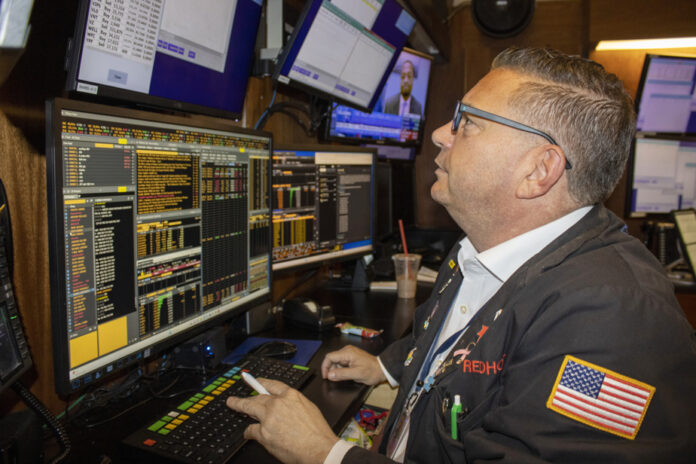(New York) The New York Stock Exchange concluded in the green for a third session in a row on Wednesday for the Dow Jones, while remaining cautious before the release of American inflation on Thursday.
The Dow Jones index nibbled 0.19% to 33,804.87 points, the NASDAQ, with its strong technological coloring, gained 0.71% to 13,659.68 points and the S
Bond rates continued to fall, with ten-year rates at 4.56% compared to 4.65% the day before and 4.80% at the end of last week.
“The market closed higher despite a hotter than expected wholesale price index,” said Peter Cardillo of Spartan Capital.
The U.S. Producer Price Index (PPI) rose another 0.5% in September, more than the 0.3% expected, after already 0.7% in August.
“We will have the CPI Consumer Price Index tomorrow Thursday. If annual inflation goes in the right direction, the upward trend on the stock market could continue while waiting for the banking results which inaugurate the corporate results season, further indicated Peter Cardillo.
Investors also digested the minutes of the Fed’s last monetary meeting (“minutes”).
This shows that a majority of Fed members were in favor of another hike in key rates to combat inflation and that they agree with leaving them high for longer.
“But these minutes date from before the conflict between Israel and Hamas,” noted the Spartan Capital analyst, “which is why the market did not react so much” to the rather hawkish tone of the Fed.
On the stock market, ExxonMobil lost 3.59% to 106.49 dollars with the announcement of the purchase of its compatriot Pioneer Natural Resources, for around 60 billion dollars.
Shares of Pioneer, a large producer in Texas’ Permian Basin, gained 1.44% to $240.82.
The two companies have highlighted their objective of accelerating the ambition of carbon neutral production in the Permian Basin for Pioneer from 2035, rather than 2050.
But they could attract the wrath of environmental defenders, at a time when calls to move away from fossil fuels are increasing around the world.
Automaker Stellantis was sought after (3.42%) after announcing a $3.2 billion investment with Samsung SDI to build an electric vehicle battery factory in Indiana.
Computer and printer maker HP (HPQ) shared strong estimates for its full-year results, forecasting a 5% increase in its dividend. The stock gained 1.51%.
The event of the day could have been the IPO on the NYSE of sandals with large leather soles from the German manufacturer Birkenstock, but they missed the mark.
The stock with ticker symbol “BIRK” closed at $40.20, 12.61% lower than its IPO price of $46.
This flop on the first day of trading, rather rare for renowned companies, could deal a blow to the IPOS market still convalescing on Wall Street.
Birkenstock, which is owned by French luxury group LVMH while retaining a family stake, has generated sales of $1.11 billion over the past nine months.
“In 2021, private equity firm L. Catterton and Financière Agache acquired a majority stake in Birkenstock, with a view to expanding into the Chinese market,” recalls Michael Hewson of CMC Markets.
For Wall Street, Birkenstock’s IPO is a new test in a slowly recovering IPO market.
Last month, three new entrants made their mark: semiconductor designer Arm, grocery delivery platform Instacart and online marketer Klaviyo. Only Instacart currently has a price lower than its IPO price.
The strength of the utilities, telecommunications and financial sectors allowed the Toronto Stock Exchange to close higher on Wednesday.
After strong gains at the start of the week, Wednesday proved to be more volatile, observed Greg Taylor, chief investment officer at Purpose Investments, and trading was choppy throughout the day, before markets finish in the green.
“It’s a pretty confusing day,” he said.
The composite index S
Energy prices fell on Wednesday, Taylor noted, with the price of oil falling more than 2%. The price of oil has retreated from recent highs, falling from more than US$90 per barrel to less than US$84.
“I think it surprised a lot of people because people were starting to increase risk on commodities,” Mr. Taylor said.
“Seeing them pull back today is a little surprising, and it’s interesting to see stocks performing a little better. »















